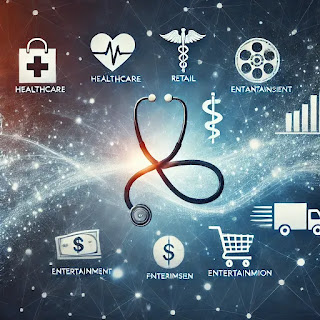Introduction: Data Science has revolutionized the way businesses, governments, and even individuals make decisions. By analyzing massive amounts of data, organizations can now make more informed choices, predict future trends, and optimize their operations in ways never before possible. In this post, we will explore how data science has transformed decision-making across various industries and why it’s an essential part of today’s world.
1. Data Science in Healthcare
In healthcare, data science is helping doctors and hospitals make better, more accurate decisions about patient care. By analyzing patient data, including medical histories, test results, and even genetic information, healthcare professionals can predict potential health issues and recommend personalized treatments.
Example:
- Predictive models are used to forecast disease outbreaks and prevent widespread epidemics.
- AI-powered tools help doctors detect diseases like cancer earlier than traditional methods.
2. Data Science in Retail and E-Commerce
The retail industry has been transformed by data science. Retailers now use data to understand customer behavior, predict trends, and even suggest personalized product recommendations. This allows companies to tailor their marketing efforts, manage inventory, and improve customer satisfaction.
Example:
- Online stores like Amazon use data to recommend products to customers based on their shopping history.
- Retailers use customer data to predict what products will sell best in upcoming seasons.
3. Data Science in Finance
The financial sector relies heavily on data science to make decisions about investments, detect fraud, and manage risk. By analyzing market data and economic trends, financial institutions can forecast stock prices, identify potential risks, and improve decision-making.
Example:
- Banks use machine learning algorithms to detect fraudulent transactions and protect customer accounts.
- Investment firms use predictive models to make better decisions about where to allocate funds.
4. Data Science in Entertainment
Entertainment platforms, like Netflix and Spotify, use data science to understand user preferences and recommend content that users are likely to enjoy. By analyzing data on viewing or listening habits, they can suggest movies, shows, or songs that fit individual tastes, improving user satisfaction and engagement.
Example:
- Netflix uses algorithms to recommend shows based on your viewing history, leading to higher engagement and customer retention.
- Music streaming platforms use data to curate personalized playlists for users based on their listening habits.
5. Data Science in Transportation and Logistics
In transportation, data science plays a key role in optimizing routes, managing traffic, and improving fuel efficiency. Companies like Uber and Lyft use data to match drivers with passengers in the most efficient way, while logistics companies use data to streamline delivery routes and reduce costs.
Example:
- Ride-hailing services use real-time data to optimize driver-passenger pairing, reducing wait times and improving efficiency.
- Logistics companies use data analytics to find the most efficient delivery routes, saving fuel and cutting down on delivery times.
Conclusion:
Data Science is not just a tool for analyzing data; it's a transformative force that reshapes how industries operate and make decisions. From healthcare to retail, finance, entertainment, and transportation, data science has become an essential part of decision-making processes. By using data to gain insights, predict trends, and optimize operations, companies are better equipped to thrive in today's fast-paced, data-driven world.
As the field continues to evolve, the impact of data science on decision-making will only grow, opening up new opportunities for innovation, efficiency, and smarter choices across all sectors. Whether you’re a business leader or a curious reader, understanding how data science works can help you appreciate its powerful role in shaping the future!

Comments
Post a Comment